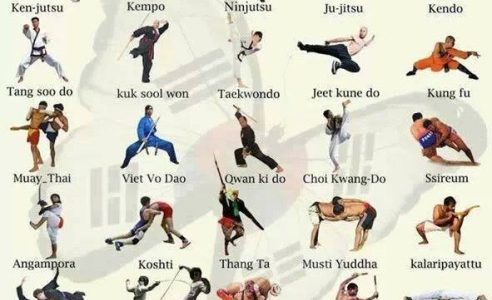A Comparative Research Of Typical Martial Arts And Modern Fight Sports: Highlighting The Necessary Distinctions
A Comparative Research Of Typical Martial Arts And Modern Fight Sports: Highlighting The Necessary Distinctions
Blog Article
Post By-Valentine Snedker
When you consider martial arts, do you lean much more toward the typical practices or the modern-day combat sports? Each course supplies unique benefits and experiences, shaped by their philosophies and training approaches. Standard martial arts stress individual development and self-control, while contemporary fight sports focus on competition and performance. Comprehending these distinctions can direct you in choosing the best method for your journey. However how do these distinctions manifest in training and viewpoint?
The Ideology and Background Behind Conventional Martial arts
While many people connect martial arts with physical fight, the ideology and history behind traditional martial arts run much deeper. You'll discover that these techniques highlight individual development, technique, and respect.
Originating from ancient practices, conventional martial arts were frequently created for Self-Defense and spiritual development. They personify concepts such as equilibrium, harmony, and self-control, leading experts past plain fighting abilities.
As you educate, you'll not just discover techniques however also gain understandings right into the culture and values that shaped these arts. The routines and practices, commonly given via generations, foster a feeling of community and belonging.
The Affordable Nature of Modern Combat Sports
Modern fight sporting activities have actually changed the landscape of martial arts right into a very competitive field, where athletes face off in an examination of skill, method, and endurance.
You'll notice that competitors are frequently arranged with strict regulations and guidelines, making certain fair play and security. how many kids are enrolled in premier martial arts schools draw in large target markets, fueling the enjoyment and strength of matchups.
Athletes educate carefully, not just for physical expertise however also for psychological toughness, recognizing that every detail counts in the ring. The adrenaline rush during competitors is palpable, as competitors press their restrictions to claim triumph.
Followers value the athleticism and artistry entailed, making modern battle sports a thrilling phenomenon that remains to develop and captivate enthusiasts all over the world.
Training Methods and Techniques: A Comparative Evaluation
The competitive ambience of contemporary battle sports demands ingenious training techniques that vary dramatically from conventional martial arts.
In modern training, you'll focus on specific strategies, sparring, and conditioning, typically utilizing drills that imitate actual battle scenarios. You'll see a focus on quantifiable performance and frequent competition to analyze your abilities.
On the other hand, traditional martial arts focus on types, katas, and philosophical mentors, often stressing technique and regard over competitors.
Training is typically less intense and might involve repeated practice instead of real-time sparring.
While both methods develop skill and fitness, modern fight sporting activities provide an extra vibrant and adaptable training setting, preparing you for instant difficulties in the ring or cage.
Select the path that straightens with your objectives and passions.
Conclusion
In choosing between standard martial arts and modern-day combat sports, it actually comes down to what you value most. If relevant resource site looking for individual development, discipline, and a feeling of area, standard arts could be your finest fit. But if you grow on competition and real-time difficulties, contemporary battle sports could be the means to go. Inevitably, both paths provide one-of-a-kind advantages, so it's everything about aligning your training with your individual objectives and interests.
